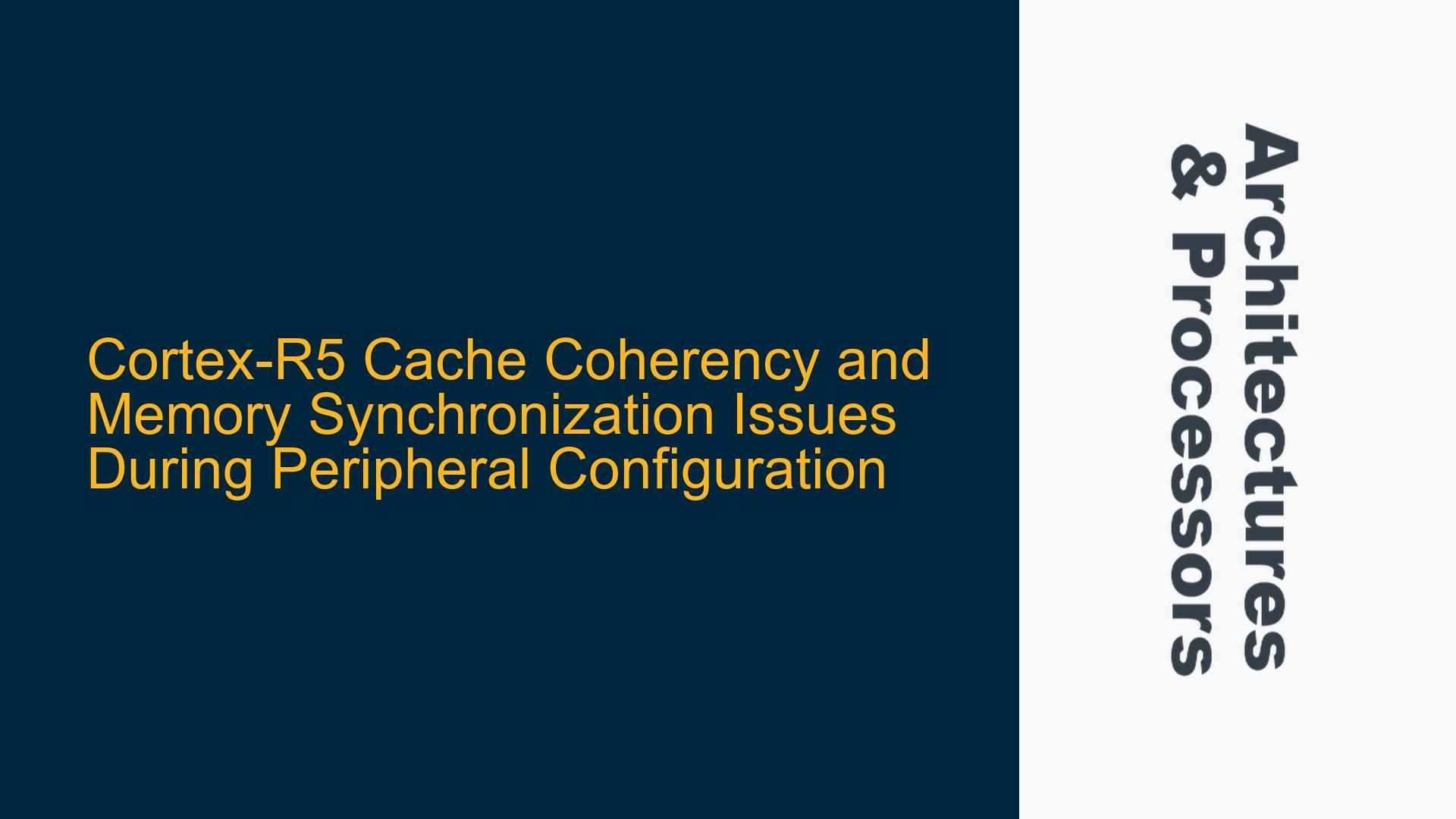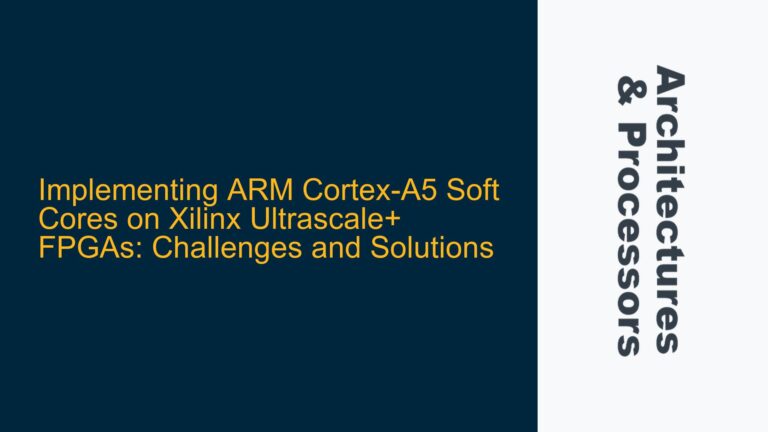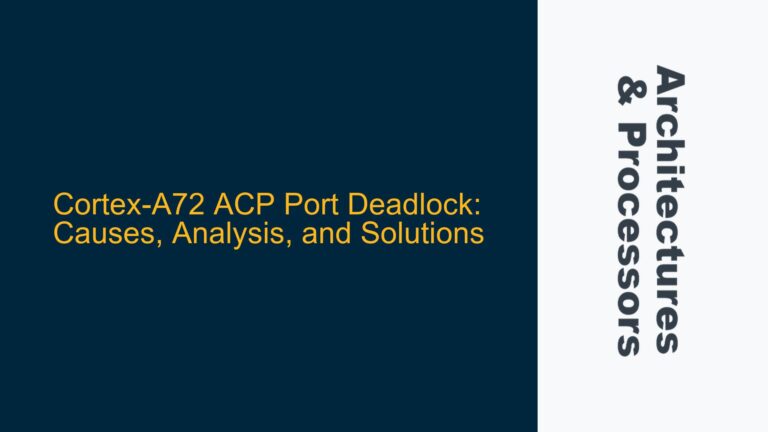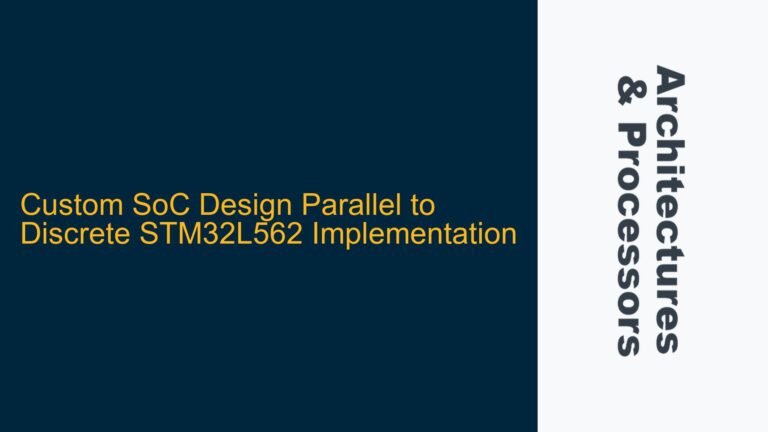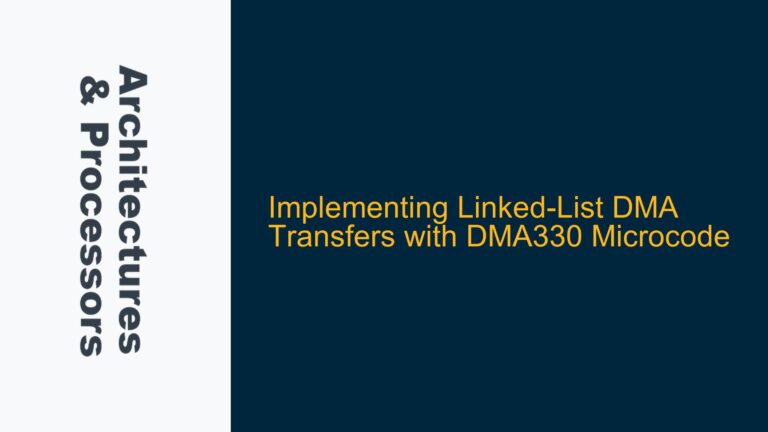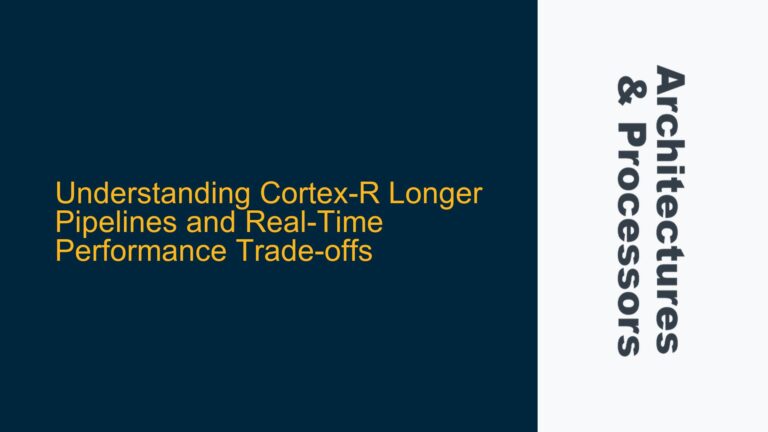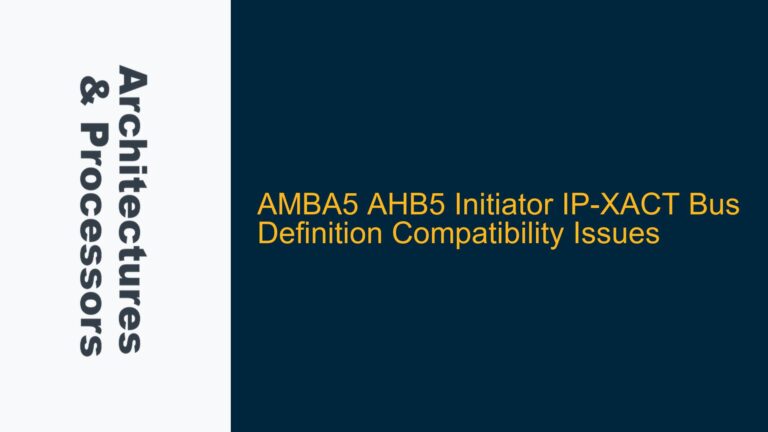Cortex-R5 Cache Coherency and Memory Synchronization Issues During Peripheral Configuration
In embedded systems leveraging the ARM Cortex-R5 processor, ensuring proper cache coherency and memory synchronization is critical when configuring peripherals and triggering events. The Cortex-R5, being a high-performance real-time processor, is often used in safety-critical applications where deterministic behavior is paramount. However, subtle issues can arise when memory transactions are not properly synchronized, leading to unexpected behavior such as the need for artificial delays (e.g., a for loop with a high iteration count) to ensure correct operation. This post delves into the root causes of such issues, explores the underlying hardware-software interactions, and provides detailed solutions to ensure reliable system behavior.
Cache Coherency and Memory Barrier Omission in Cortex-R5
The Cortex-R5 processor features a Harvard architecture with separate instruction and data caches, which can lead to cache coherency issues if not managed correctly. When configuring peripherals, memory-mapped I/O (MMIO) operations are often performed to set up control registers. These operations must be completed before triggering an event that relies on the configured state. However, the presence of caches and write buffers can delay the actual completion of these memory transactions, leading to race conditions.
The Cortex-R5 provides Data Memory Barrier (DMB) and Data Synchronization Barrier (DSB) instructions to enforce memory ordering. DMB ensures that all memory accesses before the barrier are completed before any memory accesses after the barrier, while DSB ensures that all instructions before the barrier are completed before any subsequent instructions are executed. However, improper use or omission of these barriers can result in memory transactions not being completed in the expected order.
In the described scenario, the developer initially used a for loop to introduce a delay, suspecting that memory operations were not completing before the event trigger. While this approach worked, it is not a robust solution. The developer then attempted to replace the delay with DMB and DSB instructions but still observed the need for the delay. This suggests that the issue may not be solely related to memory barriers but could also involve cache coherency or other hardware-software interactions.
Cache Invalidation and Write Buffer Flushing Timing
One possible cause of the observed behavior is that the cache invalidation or write buffer flushing is not occurring at the correct time. The Cortex-R5’s cache and write buffer can hold data temporarily, delaying its propagation to the actual peripheral registers. If the event is triggered before the cache lines are invalidated or the write buffer is flushed, the peripheral may not be in the expected state.
Another potential cause is the interaction between the Cortex-R5 and the memory system. The Cortex-R5 supports multiple memory regions with different attributes, such as cacheable, non-cacheable, and device memory. If the peripheral registers are mapped to a cacheable memory region, the cache may interfere with the timely completion of memory transactions. Conversely, if the registers are mapped to a non-cacheable or device memory region, the memory system may enforce stricter ordering, but this is not always guaranteed without explicit barriers.
Additionally, the Cortex-R5’s memory protection unit (MPU) can influence memory transactions. If the MPU is configured to enforce strict memory access ordering, it may introduce additional delays or require explicit synchronization. The MPU settings should be reviewed to ensure they align with the intended memory transaction behavior.
Implementing Cache Management and Memory Synchronization Techniques
To resolve the issue, a combination of cache management and memory synchronization techniques must be employed. The following steps outline a systematic approach to ensure that all memory transactions are completed before triggering the event:
-
Memory Region Configuration: Ensure that the peripheral registers are mapped to the appropriate memory region. For MMIO operations, it is generally recommended to map peripheral registers to a non-cacheable or device memory region. This prevents the cache from interfering with memory transactions and ensures that writes are propagated directly to the peripheral.
-
Cache Invalidation and Write Buffer Flushing: Before triggering the event, explicitly invalidate the cache lines corresponding to the peripheral registers and flush the write buffer. This ensures that any pending writes are completed. The Cortex-R5 provides cache maintenance operations, such as
DCIMVAC(Data Cache Invalidate by MVA to PoC) andDCCIMVAC(Data Cache Clean and Invalidate by MVA to PoC), which can be used for this purpose. -
Memory Barrier Usage: Use DMB and DSB instructions to enforce memory ordering. Place a DMB instruction after the memory-mapped I/O operations to ensure that all writes are completed before proceeding. Follow this with a DSB instruction to ensure that all subsequent instructions, including the event trigger, are executed only after the memory operations are complete.
-
MPU Configuration Review: Review the MPU settings to ensure that they do not introduce unintended delays or enforce overly strict memory access ordering. Adjust the MPU regions and attributes as necessary to align with the desired memory transaction behavior.
-
Event Trigger Timing: After performing the above steps, verify that the event trigger occurs only after all memory transactions are complete. This can be done by monitoring the peripheral registers or using debug tools to trace the execution flow.
By following these steps, the need for artificial delays can be eliminated, and the system can achieve deterministic behavior. The following table summarizes the key actions and their purposes:
| Action | Purpose |
|---|---|
| Map peripheral registers to non-cacheable or device memory | Prevent cache interference with MMIO operations. |
| Invalidate cache lines and flush write buffer | Ensure pending writes are completed before triggering the event. |
| Use DMB and DSB instructions | Enforce memory ordering and synchronization. |
| Review and adjust MPU settings | Align memory access behavior with system requirements. |
| Verify event trigger timing | Ensure event occurs only after memory transactions are complete. |
In conclusion, the Cortex-R5’s cache and memory system provide powerful features for optimizing performance, but they also introduce complexities that must be carefully managed. By understanding the underlying hardware-software interactions and employing the appropriate techniques, developers can ensure reliable and deterministic behavior in their embedded systems.
